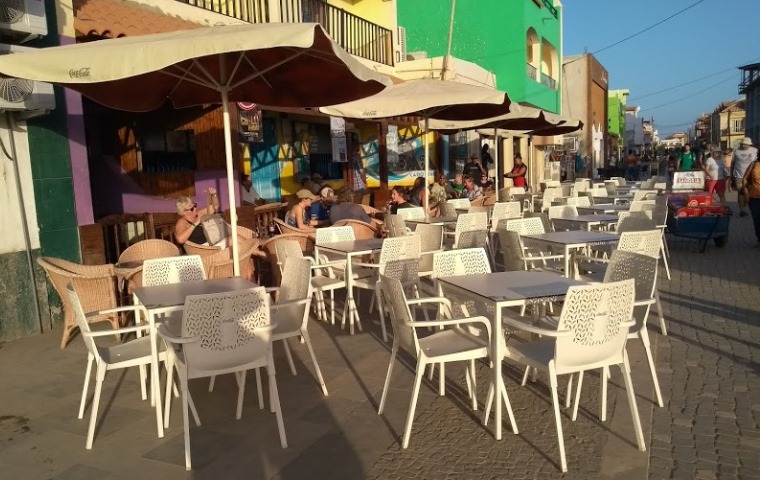History of Cape Verde
Information about Cape Verde - Did you know that:
Jewish people settled on Santiago and other islands. Some had escaped the ‘Inquisition’ whilst others were forced to work there or in other Portuguese colonies. More Jews followed from Morrocco in the 19th & 20th Century. There are Jewish graves on Sao Antao and Brava.
• during World War 2 Winston Churchill had made plans to invade Cape Verde, but these plans were called off at the last minute.
• when the archipelago became independent on July 5th 1975, that the independence of Cape Verde was shared with Guinea Bissau, they were a joint country until 1980.
• the archipelago adopted a new national anthem and flag in 1992.
• the Macronesia group of islands includes the archipelago, the Canaries and the Azores.
• the archipelago is divided into two groups:
- Barlavento, or windward islands in the north which include, Santo Antao, Sao Vicente, Santa Luzia, Sao Nicolau, Sal and Boavista.
- Sotavento, or leeward islands in the south include Maio, Santiago, Fogo and Brava.
• longitudinally the three most easterly islands are extremely flat.
• Cape Verde is a marine extension of the Sahara. A series of hot winds carrying brown dust from the Sahara appear in blasts that sweep across the islands during October to June and are known as harmattandry (other sources say they blow between December and March).
• Cape Verde tends to miss the yearly southwest monsoon which generally occurs between August and October when the northeast trade winds meet those of the southwest. The longest record of time that Cape Verde has gone without being watered by the southwest monsoon is 18yrs. When the rains do come they are usually short and violent.
• Cape Verde suffers from desertification caused by drought, eroding wind, bad farming techniques including unrestrained munching by goats. Any short violent rainfalls will wash topsoil from higher grounds and into the sea.
• It is illegal to capture turtles between June and February.
• in 2005 there were 418,224 inhabitants on the Cape Verde islands. There are more Cape Verdeans living abroad than at home. There are over 350,000 in the USA alone. Cape Verdeans also emigrated to the Netherlands, Italy, Portugal, others include Senegal, Angola, Luxemburg, Argentina and Brazil. In the UK there are groups of Cape Verdeans in Liverpool, Cardiff, Newcastle and Hull
• only a tenth of the land is suitable for agriculture. The soil is good but the production of food is hampered by the lack of water and the legacy of the inefficient land tenure system.
• there is one goat for every two people on the islands.
• It is believed the Creole language evolved as a result of slave communities of the past being discouraged from speaking their native language. To communicate they used bits of the Portuguese language put together with words or bits of words from other sources. Creole differs greatly from island to island and even within the islands.
• It is said that after 20 years of continuous drinking of the locally produced grogue, that it could make you blind.
• that the brown booby is not a name of a womans part of the body but that of a bird, known locally as Alcatraz. It can be seen on a 20escudo
coin.
• in 1683 an English sailor named William Dampier reported that he had seen flamingos on Sal.
• that tunnels were cut through the walls of the crater at Pedra de Lume to make it easier to transport the salt out of there. In 1919 to make things easier a tramway was built for the purpose of transporting salt to the port.
• that Benito Mussolini the Italian dictator bought the rights to build an airport on Sal as he needed to refuel his aircraft on the flights between Europe and South America. Portugal bought the airport back off him in 1945.
• Josh Angula has twice won the PWA World Championship in Sal.
• Christopher Columbus visited the island of Boa Vista in 1498.
• Boa Vista had been used as a leper colony in the 1400’s for the more affluent Europeans.
• the town of Sal Rei on Boa Vista was previously known as Porto Ingles
• the beach near Morre Negro is renowned for attracting dolphins and whales who beach themselves. Their remains can be seen along that area of coast.
• Sir Francis Drake first visited Maio and the Cape Verde islands in 1578.
• the island of Santiago is about twice the size of the Isle of Wight.
• more than half the population of the archipelago lives on Santiago.
• Charles Darwin studied flora and fauna on the island in 1832
• in 1933 aviators Charles and Anne Morrow Lindburgh landed at Praia whilst attempting to circumnavigate the north atlantic.
• Sir Frances Drake attacked settlements on the island in 1585.
• Vasco da Gama visited Santiago in 1497. It was on that same voyage he later discovered India.
• there was a concentration camp at Tarrafal which operated between 1936-54 and then in the 1960’s but closing finally in 1974.
• at 35km2, Santa Lucia it is the smallest island in the archipelago and is uninhabited.
• Brava is the smallest inhabited island at 64km2.
Investing in Property
-

Most Popular
Investment in Cape Verde
Promote your property- INVESTING IN PROPERTY CAPE VERDE ISLANDS
Accommodation
-
No items found.